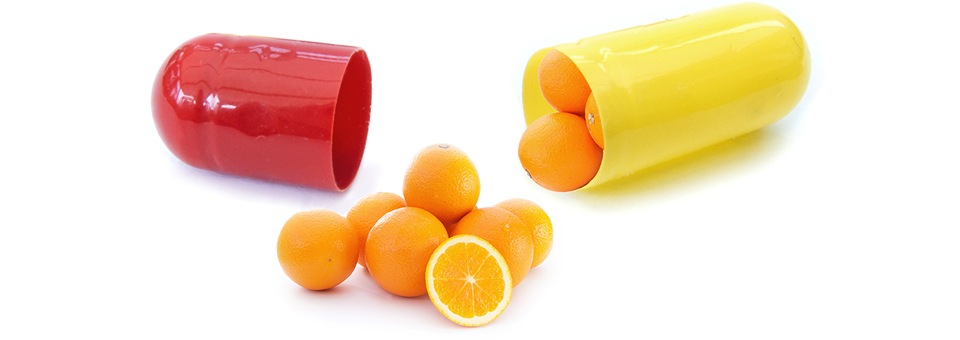I’ve admired Linus Pauling for years.
In 1976, the Nobel Prize-winning chemist gave mega doses of vitamin C to 100 “untreatable” cancer patients.
He then compared these so-called terminal patients to patients with the same kind of cancer who didn’t get vitamin C.
The patients who received the traditional cancer treatment lived for an average of six months.
Pauling’s patients lived — on average — for six years.
You’d think that the medical community would have heralded Pauling’s research as a huge breakthrough in cancer treatment.
But they didn’t. And they still don’t.
Despite groundbreaking research like this, traditional doctors still dismiss vitamin C as “unnecessary” and “a waste of money.”
And that’s a big mistake because we were all born with a severe vitamin C deficiency. Let me explain…
Humans are one of the very few animals on Earth that can’t produce their own vitamin C. The others are apes, fish, fruit bats and guinea pigs.
All other animals have an enzyme in their kidneys or livers that produces their daily requirement of the vitamin.1
For example, a 150-pound goat makes more than 13,000 mg of vitamin C a day.
And when animals have health issues or injuries, they produce up to 100,000 mg of extra vitamin C to get them through the crisis.
Our ability to make vitamin C disappeared about 60 million years ago.2
That wasn’t a big issue for our ancestors. But it’s a big deal for you and me. In our toxic world, our fruits and vegetables have been stripped of vital vitamins like “C.” We can’t get what we need to stay healthy.
Consider this…
If humans made their own vitamin C in the same ratio that animals do, we’d produce about 10,000 mg per day. That’s the amount Linus Pauling gave his cancer
patients.Since Pauling’s remarkable research, more than 18,000 studies have shown that vitamin C is essential in the fight against more than 200 different diseases — including cancer.
In a recent study, researchers compared vitamin C against three experimental cancer drugs and one clinical cancer drug to see how they affected the growth of cancer cells.
What they discovered was incredible…
Vitamin C was up to 10 times more effective than experimental drugs.3
The study also found that vitamin C stops glycolysis. That’s the process that “feeds” cancer cells.
And a recent study by scientists at the University of Texas found that vitamin C can prevent blood cancers, like leukemia.4
Researchers discovered that the cells that eventually grow into cancer-fighting white blood cells require “unusually large amounts” of vitamin C to regulate the suppression of leukemia.
In other words, the scientists proved that high doses of vitamin C drastically reduce your risk of blood cancer — and may even work to reverse it.

A vitamin C IV can give you a boost of energy or can help if you feel a cold coming on.
Here are three ways you can get all the vitamin C you need:
- Get vitamin C from food. Two common foods with a lot of vitamin C are red and green chili peppers (242 mg per 100 grams), and guava (228 mg). For comparison, oranges and strawberries only have about 60 mg per 100 grams. But the king of all fruits as far as vitamin C goes is camu camu. It has 2,700 mg per 100 grams — 60 times more vitamin C than an orange!
- Take a supplement. Based on my own experience, Pauling’s daily mega-doses aren’t usually necessary. I recommend you take between 5,000 to 8,000 mg daily. If you’re fighting cancer, you’re looking at 15,000 mg to 20,000 mg.
- A bigger boost. If you’ve been lacking vitamin C, stressed or sick, you might want to consider IV vitamin C therapy.
You can safely get much more vitamin C through an IV than you can through supplements. You can infuse vitamin C at 100 times the concentration of oral supplements completely safely. No matter how high the dose, vitamin C does not harm healthy cells.
Many of my patients tell me they get a huge boost of energy and a feeling of well-being the day after IV vitamin therapy.
If you’re interested in IV therapy at my clinic, please call (561) 784-7852. My staff will be happy to answer any of your questions.
To Your Good Health,
![]()
Al Sears, MD, CNS
1. Drouin G,* et al. “The Genetics of Vitamin C Loss in Vertebrates.” Curr Genomics. 2011 Aug.
2. Chatterjee IB, Majumder AK, et al. “Synthesis and some major functions of vitamin C in animals.” Ann NY Acad Sci. 1975 Sep 30.
3. Bonuccelli G, et al. “NADH autofluorescence, a new metabolic biomarker for cancer stem cells: Identification of Vitamin C and CAPE as natural products targeting “stemness”.” Oncotarget. 2017 Mar 28.
4. Agathocleous M, Corbin E. “Ascorbate regulates haematopoietic stem cell function and leukaemogenesis.” Nature. 28 September 2017.

